乙氧基羰酰异氰酸酯 ,ETHOXYCARBONYL ISOCYANATE ,90%
产品编号:SIGMA-308226| CAS NO:19617-43-7| 分子式:C4H5NO3| 分子量:115.0874
本网站销售的所有产品仅用于工业应用或者科学研究等非医疗目的,不可用于人类或动物的临床诊断或者治疗,非药用,非食用,
| 产品名称 | 乙氧基羰酰异氰酸酯 |
|---|---|
| 英文名称 | ETHOXYCARBONYL ISOCYANATE |
| CAS编号 | 19617-43-7 |
| 产品沸点 | 129.3±9.0 °C at 760 mmHg |
| 产品密度 | 1.1±0.1 g/cm3 |
| 产品闪点 | 35.6±0.0 °C |
| 精确质量 | 115.026939 |
| PSA | 55.73000 |
| LogP | 1.43 |
| 外观性状 | Liquid | Clear colorless |
| 蒸气压 | 10.2±0.2 mmHg at 25°C |
| 折射率 | 1.444 |
| 储存条件 | Flammables area |
相关文档
化学品安全说明书(MSDS)
下载MSDS质检证书(COA)
相关产品
| 符号 |
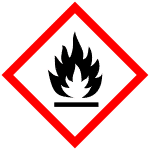

GHS02, GHS07 |
|---|---|
| 信号词 | Warning |
| 危害声明 | H226-H302 + H312 + H332-H315-H319-H335 |
| 警示性声明 | P261-P280-P305 + P351 + P338 |
| 个人防护装备 | Eyeshields;Faceshields;full-face respirator (US);Gloves;multi-purpose combination respirator cartridge (US);type ABEK (EN14387) respirator filter |
| 危害码 (欧洲) | Xn |
| 风险声明 (欧洲) | R10 |
| 安全声明 (欧洲) | S7 |
| 危险品运输编码 | UN 3080 6.1/PG 2 |
| WGK德国 | 3 |
| 包装等级 | II |
| 危险类别 | 6.1(a) |
| 海关编码 | 2929109000 |
Synonym:None Section 2 - COMPOSITION, INFORMATION ON INGREDIENTS
Risk Phrases: 10 Section 3 - HAZARDS IDENTIFICATION EMERGENCY OVERVIEW
Flammable.Moisture sensitive. Potential Health Effects Eye: May cause eye irritation. The toxicological properties of this material have not been fully investigated. Skin: May cause skin irritation. The toxicological properties of this material have not been fully investigated. Ingestion: May cause gastrointestinal irritation with nausea, vomiting and diarrhea. Contains cyanide. May cause dizziness, tremors, restlessness, rapid heart beat, increased blood pressure, hallucinations, kidney failure, and pulmonary edema. Inhalation: May cause respiratory tract irritation. Vapors may cause dizziness or suffocation. Inhalation of high concentrations may cause pulmonary edema. May cause cardiac abnormalities. Contains cyanide. Chronic: Chronic inhalation and ingestion may cause effects similar to those of acute inhalation and ingestion. Section 4 - FIRST AID MEASURES Eyes: Flush eyes with plenty of water for at least 15 minutes, occasionally lifting the upper and lower eyelids. Get medical aid immediately. Skin: Get medical aid. Flush skin with plenty of water for at least 15 minutes while removing contaminated clothing and shoes. Wash clothing before reuse. Ingestion: Never give anything by mouth to an unconscious person. Get medical aid immediately. Do NOT induce vomiting. If conscious and alert, rinse mouth and drink 2-4 cupfuls of milk or water. Inhalation: Remove from exposure and move to fresh air immediately. If not breathing, give artificial respiration. If breathing is difficult, give oxygen. Get medical aid. Notes to Physician: Exposure should be treated as a cyanide poisoning. Antidote: Always have a cyanide antidote kit on hand when working with cyanide compounds. Get medical advice to use. Section 5 - FIRE FIGHTING MEASURES General Information: As in any fire, wear a self-contained breathing apparatus in pressure-demand, MSHA/NIOSH (approved or equivalent), and full protective gear. Vapors may form an explosive mixture with air. During a fire, irritating and highly toxic gases may be generated by thermal decomposition or combustion. Will burn if involved in a fire. Use water spray to keep fire-exposed containers cool. Containers may explode in the heat of a fire. Flammable liquid and vapor. Extinguishing Media: For small fires, use dry chemical, carbon dioxide, water spray or alcohol-resistant foam. For large fires, use water spray, fog, or alcohol-resistant foam. Use water spray to cool fire-exposed containers. Water may be ineffective. Do NOT use straight streams of water. Section 6 - ACCIDENTAL RELEASE MEASURES General Information: Use proper personal protective equipment as indicated in Section 8. Spills/Leaks: Absorb spill with inert material (e.g. vermiculite, sand or earth), then place in suitable container. Clean up spills immediately, observing precautions in the Protective Equipment section. Remove all sources of ignition. Use a spark-proof tool. Provide ventilation. A vapor suppressing foam may be used to reduce vapors. Section 7 - HANDLING and STORAGE Handling: Wash thoroughly after handling. Use with adequate ventilation. Ground and bond containers when transferring material. Use spark-proof tools and explosion proof equipment. Avoid breathing dust, vapor, mist, or gas. Avoid contact with skin and eyes. Empty containers retain product residue, (liquid and/or vapor), and can be dangerous. Keep container tightly closed. Keep away from heat, sparks and flame. Do not pressurize, cut, weld, braze, solder, drill, grind, or expose empty containers to heat, sparks or open flames. Storage: Keep away from heat, sparks, and flame. Keep away from sources of ignition. Store in a tightly closed container. Keep under a nitrogen blanket. Store in a cool, dry, well-ventilated area away from incompatible substances. Flammables-area. Section 8 - EXPOSURE CONTROLS, PERSONAL PROTECTION Engineering Controls: Use adequate ventilation to keep airborne concentrations low. Exposure Limits CAS# 19617-43-7: Personal Protective Equipment Eyes: Wear appropriate protective eyeglasses or chemical safety goggles as described by OSHA's eye and face protection regulations in 29 CFR 1910.133 or European Standard EN166. Skin: Wear appropriate protective gloves to prevent skin exposure. Clothing: Wear appropriate protective clothing to prevent skin exposure. Respirators: Follow the OSHA respirator regulations found in 29 CFR 1910.134 or European Standard EN 149. Use a NIOSH/MSHA or European Standard EN 149 approved respirator if exposure limits are exceeded or if irritation or other symptoms are experienced. Section 9 - PHYSICAL AND CHEMICAL PROPERTIES Physical State: Liquid Color: clear, colorless Odor: Not available. pH: Not available. Vapor Pressure: Not available. Viscosity: Not available. Boiling Point: 25 deg C @ 10.00mm Freezing/Melting Point: Not available. Autoignition Temperature: Not available. Flash Point: 35 deg C ( 95.00 deg F) Explosion Limits, lower: N/A Explosion Limits, upper: N/A Decomposition Temperature: Solubility in water: Specific Gravity/Density: 1.1150g/cm3 Molecular Formula: C2H5O2NCO Molecular Weight: 115.09 Section 10 - STABILITY AND REACTIVITY Chemical Stability: Stable at room temperature in closed containers under normal storage and handling conditions. Conditions to Avoid: Incompatible materials, ignition sources, excess heat, exposure to moist air or water. Incompatibilities with Other Materials: Oxidizing agents. Hazardous Decomposition Products: Nitrogen oxides, carbon monoxide, irritating and toxic fumes and gases, carbon dioxide. Hazardous Polymerization: Has not been reported Section 11 - TOXICOLOGICAL INFORMATION RTECS#: CAS# 19617-43-7 unlisted. LD50/LC50: Not available. Carcinogenicity: Ethoxycarbonyl Isocyanate - Not listed by ACGIH, IARC, or NTP. Section 12 - ECOLOGICAL INFORMATION Section 13 - DISPOSAL CONSIDERATIONS Dispose of in a manner consistent with federal, state, and local regulations. Section 14 - TRANSPORT INFORMATION IATA Shipping Name: ISOCYANATES, TOXIC, FLAMMABLE, N.O.S.* Hazard Class: 6.1 (3) UN Number: 3080 Packing Group: II IMO Shipping Name: ISOCYANATES, TOXIC, FLAMMABLE, N.O.S. Hazard Class: 6.1 (3) UN Number: 3080 Packing Group: II RID/ADR Shipping Name: ISOCYANATES, TOXIC, FLAMMABLE, N.O.S. Hazard Class: 6.1 (3) UN Number: 3080 Packing group: II Section 15 - REGULATORY INFORMATION European/International Regulations European Labeling in Accordance with EC Directives Hazard Symbols: Not available. Risk Phrases: R 10 Flammable. Safety Phrases: S 9 Keep container in a well-ventilated place. S 16 Keep away from sources of ignition - No smoking. S 26 In case of contact with eyes, rinse immediately with plenty of water and seek medical advice. S 28A After contact with skin, wash immediately with plenty of water. S 33 Take precautionary measures against static discharges. S 36/37/39 Wear suitable protective clothing, gloves and eye/face protection. S 37 Wear suitable gloves. S 45 In case of accident or if you feel unwell, seek medical advice immediately (show the label where possible). WGK (Water Danger/Protection) CAS# 19617-43-7: No information available. Canada None of the chemicals in this product are listed on the DSL/NDSL list. CAS# 19617-43-7 is not listed on Canada's Ingredient Disclosure List. US FEDERAL TSCA CAS# 19617-43-7 is not listed on the TSCA inventory. It is for research and development use only. SECTION 16 - ADDITIONAL INFORMATION N/A |
|
~% 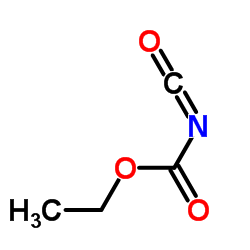
19617-43-7 |
| 文献:Angewandte Chemie - International Edition, , vol. 46, # 32 p. 6123 - 6125 |
|
~% 
19617-43-7 |
| 文献:Journal of Heterocyclic Chemistry, , vol. 6, p. 261 - 264 |
|
~% 
19617-43-7 |
| 文献:Chemische Berichte, , vol. 39, p. 696 |
|
~% 
19617-43-7 |
| 文献:Bulletin of the Chemical Society of Japan, , vol. 67, # 10 p. 2838 - 2849 |
|
~% 
19617-43-7
详细
|
| 文献:Chemische Berichte, , vol. 39, p. 696 |
|
~% 
19617-43-7 |
| 文献:Chemische Berichte, , vol. 41, p. 2396 |
|
~% 
19617-43-7 |
| 文献:Chemische Berichte, , vol. 44, p. 3164 |


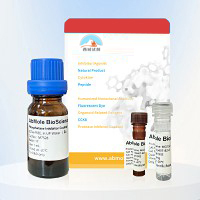
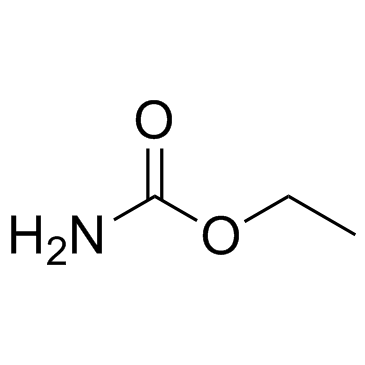
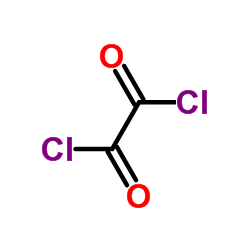


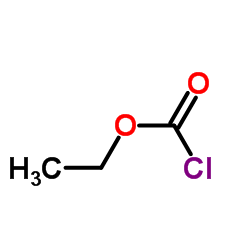

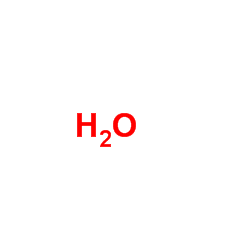
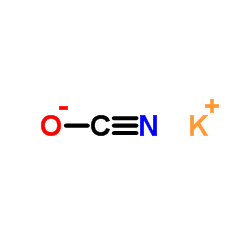
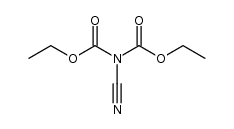





 浙公网安备 33010802013016号
浙公网安备 33010802013016号